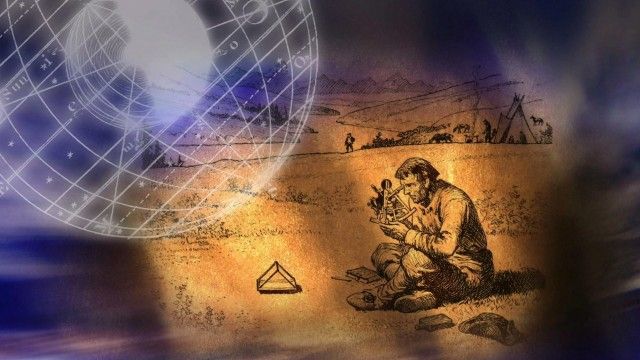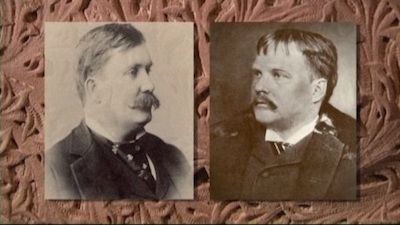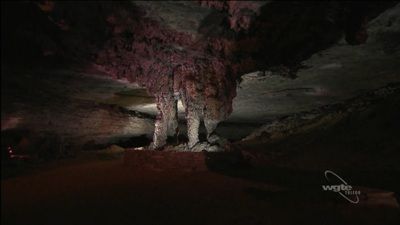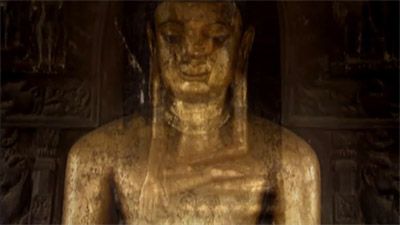The BEST episodes of PBS Specials season 2010
Every episode of PBS Specials season 2010, ranked from best to worst by thousands of votes from fans of the show. The best episodes of PBS Specials season 2010!
The Public Broadcasting Service (PBS) is an American non-profit public broadcasting television service with 354 member TV stations in the United States which hold collective ownership. However, its operations are largely funded by the Corporation for Public Broadcasting. Its headquarters are in Arlington, Virginia. PBS is the most prominent provider of programming to U.S. public television stations, distributing series such as PBS NewsHour, Masterpiece, and Frontline. Since the mid-2000s, Roper polls commissioned by PBS have consistently placed the service as America's most trusted national institution. However, PBS is not responsible for all programming carried on public TV stations; in fact, stations usually receive a large portion of their content (including most pledge drive specials) from third-party sources, such as American Public Television, NETA, and independent producers.
#1 - We Heard the Bells: The Influenza of 1918
Season 2010 - Episode 37 - Aired 1/15/2010
We meet individuals from marginalized communities who describe what it was like to live through the 1918 flu pandemic. Their experiences raise questions about the pandemic: why did it kill so many people? Why were so many of the dead young adults? Where did this lethal flu come from? How can we keep a pandemic like that from occurring again? The film follows the search for answers from an expedition to Alaska in 1951 to collect tissue from bodies buried in the permafrost, to the scientists and epidemiologists working on the same questions today. It explains the relevance of research into the 1918 pandemic to the threat of current and future flu pandemics.
#2 - Change Your Brain, Change Your Body
Season 2010 - Episode 1 - Aired 2/19/2010
Dr. Daniel Amen says there are five brain patterns associated with losing weight.

#3 - Uncharted Territory: David Thompson on the Columbia Plateau
Season 2010 - Episode 40 - Aired 4/23/2010
David Thompson is revered as a national hero in Canada, but is less well known to Americans. "Uncharted Territory: David Thompson on the Columbia Plateau" focuses on the years 1807-1812, the time that Thompson spent primarily in the Canadian Rocky Mountains and northwestern United States, and the significant contributions that he made to the history of the American Northwest.
#4 - The Brain Fitness Program
Season 2010 - Episode 39 - Aired 4/5/2010
The Brain Fitness Program is based on the brain's ability to change and adapt, even rewire itself. In the past two years, a team of scientists has developed computer-based stimulus sets that drive beneficial chemical, physical and functional changes in the brain. Dr. Michael Merzenich of the University of California and his colleagues share their scientifically based set of brain exercises in this life-altering program. Peter Coyote narrates.
#5 - William Kentridge: Anything Is Possible
Season 2010 - Episode 36 - Aired 10/21/2010
"William Kentridge: Anything Is Possible" gives viewers an intimate look into the mind and creative process of William Kentridge, the South African artist whose acclaimed charcoal drawings, animations, video installations, shadow plays, mechanical puppets, tapestries, sculptures, live performance pieces, and operas have made him one of the most dynamic and exciting contemporary artists working today. With its rich historical references and undertones of political and social commentary, Kentridge's work has earned him inclusion in "Time" magazine's 2009 list of the 100 most influential people in the world. This documentary features exclusive interviews with Kentridge as he works in his studio and discusses his artistic philosophy and techniques. In the film, Kentridge talks about how his personal history as a white South African of Jewish heritage has informed recurring themes in his work—including violent oppression, class struggle, and social and political hierarchies. Additionally, Kentridge discusses his experiments with "machines that tell you what it is to look" and how the very mechanism of vision is a metaphor for "the agency we have, whether we like it or not, to make sense of the world." We see Kentridge in his studio as he creates animations, music, video, and projection pieces for his various projects, including "Breathe" (2008); "I am not me, the horse is not mine" (2008); and the opera "The Nose" (2010), which premiered earlier this year at New York's Metropolitan Opera to rave reviews. With its playful bending of reality and observations on hierarchical systems, the world of "The Nose" provides an ideal vehicle for Kentridge. The absurdism, he explains in the documentary's closing, "...is in fact an accurate and a productive way of understanding the world. Why should we be interested in a clearly impossible story? Because, as Gogol says, in fact the impossible is what happens all the time."
#6 - War on the Eastern Front: Leningrad
Season 2010 - Episode 32 - Aired 8/3/2010
This harrowing documentary tells the story of one of the longest and most terrible sieges in the history of human warfare. When Hitler launched the Nazi invasion of Russia in 1941, the capture of the city of Leningrad was one of his primary strategic goals. Leningrad was not only an industrial powerhouse, home to many armaments factories, but also a main naval base for the Russian Baltic fleet, as well as the nation's former capital and the symbolic seat of the Bolshevik Revolution of 1917. Supported by the Finns, intent on recovering territory they had lost in the Finnish-Soviet Winter war the previous year, Nazi forces rapidly advanced on the city. Instead of entering the city, however, Hitler ordered Leningrad to be bombed and shelled into oblivion and its citizens starved to death. The siege began on September 8, 1941, the day after an air raid destroyed nearly all the city's food supplies. With the daily ration for civilians reduced to two slices of bread, many citizens died from malnutrition. The siege would last 872 days before the blockade was finally lifted, after five unsuccessful attempts, in January 1944. By this time a third of Leningrad's three million population had perished and a quarter of the city's buildings had been destroyed.

#7 - Make No Little Plans: Daniel Burnham and the American City
Season 2010 - Episode 31 - Aired 4/10/2010
Few individuals have had more impact on the American city than architect and planner Daniel Hudson Burnham. In the midst of late nineteenth century urban disorder, Burnham offered a powerful vision of what a civilized American city could look like that provided a compelling framework for Americans to make sense of the world around them. He built some of the first skyscrapers in the world, directed construction of the 1893 World's Columbian Exposition that inspired the City Beautiful Movement, and created urban plans for San Francisco, Washington, DC, Chicago, Cleveland and Manila all before the profession of urban planning existed. In fact, some say that he invented it. His work sought to reconcile things often thought opposite: the practical and the ideal, business and art, and capitalism and democracy. At the center of it all was the idea of a vibrant urban community.
#8 - Vietnam War Stories
Season 2010 - Episode 30 - Aired 5/14/2010
Nearly 166,000 men and women from the state of Wisconsin served the country in the Vietnam War more than 35 years ago. Here and Now offers of glimpse of "Wisconsin Vietnam War Stories," a three-hour documentary created by Wisconsin Public Television to reflect on the courage and service of these soldiers, many of whom lost their lives.
#9 - The Lost Ships of Rome
Season 2010 - Episode 28 - Aired 11/17/2010
In 2009, archaeologists discovered an underwater graveyard of five Roman shipwrecks off the coast of Ventotene, a small Italian island with a notorious past. It was one of the biggest archaeological finds in recent history. The vessels’ well-preserved cargo indicates that these ships did not break up on the island’s rocks, but instead sank to the seabed intact and upright. They were laden with exotic goods including wine, olive oil, and the ancient delicacy garum; a condiment highly prized among ancient Romans. These sunken treasures are providing researchers with insight into the wreck, how the Romans lived, and Ventotene’s intriguing past. The island served as a vacation resort for Rome’s emperor but it became a kind of ancient Alcatraz when the Emperor Augustus imprisoned his own daughter, Julia, there for adultery, or as more recent research suggests, for political intrigue against her father. This past summer, a team of explorers returned to the site to recover some of the ancient artifacts in hopes of shedding new light on these mysteries.
#10 - Lafayette: The Lost Hero
Season 2010 - Episode 25 - Aired 9/13/2010
No one in recorded history has suffered a fate quite like Lafayette. Once, the most famous man in the world; today, few people know who he was or what he accomplished. It is time to re-evaluate his crucial role in America's independence.
#11 - The President's Photographer: 50 Years in the Oval Office
Season 2010 - Episode 19 - Aired 11/14/2010
To a documentary photographer, like Souza, every presidency has defining stories, and those images are often how we remember a president. For Johnson, it was civil rights and Vietnam. President Reagan is forever tied to the end of the Cold War. President Clinton pursued peace in the Middle East. History has yet to define the Obama administration, but Souza is there to document it, every step of the way.
#12 - The Wall: A World Divided
Season 2010 - Episode 17 - Aired 6/28/2010
THE WALL looks inside the revolution that swept across Europe with the November 1989 opening of the Berlin Wall, to understand how this remarkable event helped end the Cold War without a fired shot. The film explores the ordinary people caught up in politics, as well as the political leaders, to reveal the tense moments surrounding the unexpected series of events that resulted in a new Europe in less than a year.
#13 - Paris: The Luminous Years
Season 2010 - Episode 16 - Aired 12/15/2010
Documentary. (2010) Key figures in the art world, including Pablo Picasso and Igor Stravinsky, were influenced by Paris.

#14 - Mammoth Cave: A Way to Wonder
Season 2010 - Episode 15 - Aired 10/4/2010
This hour-long documentary relates the remarkable history of Mammoth Cave National Park. These are tales of exploration and discovery beginning with pre-historic Native Americans thousands of years ago. Why were these people willing to brave the darkness with only cane reed torches and woven slippers? Why did African-American slave guides stay in the area and continue to lead tours even after they had been set free? These stories and many others are unearthed on this journey into Mammoth Cave National Park.
#15 - Unforgivable Blackness: Fall
Season 2010 - Episode 11 - Aired 1/18/2010
In Unforgivable Blackness, Johnson biographer Randy Roberts observes, "The press reacted [to Johnson's victory] as if Armageddon was here. That this may be the moment when it all starts to fall apart for white society." His victory spurred a search among whites for a "great white hope" who could beat Johnson and win back the title. They finally found him in Johnson's old nemesis, Jim Jeffries, who decided to return from retirement and give Johnson the fight he had always wanted. This fight was especially important to Johnson, because many whites had dismissed his claim to the title as invalid; Burns, it was argued, was never the true champion because he didn't win the title by beating Jeffries. No one had beaten Jeffries, and most thought he was certain to reclaim the title for whites. The Johnson-Jeffries fight, dubbed the "Battle of the Century," took place on July 4, 1910, in Reno, Nevada. Johnson knocked out Jeffries in the 15th round. Johnson's victory sparked a wave of nationwide race riots across in which numerous African-Americans died. Newspaper editorials warned Johnson and the black community not to be too proud. Congress eventually passed an act banning the interstate transport of fight films for fear that the images of Johnson beating his white opponents would provoke further unrest. Perhaps even more troubling for white America than Johnson's dominance over his white opponents in the boxing ring were his romantic entanglements with white women. One of his frequent traveling companions was Hattie McClay, a white prostitute. They were later joined by Belle Schreiber, also a white prostitute whom Johnson met in Chicago. "He wouldn't let anybody define him," says James Earl Jones in Unforgivable Blackness. "He was a self-defined man. And this issue of his being black was not that relevant to him. But the issue of his being free was very relevant." Johnson eventually married a white woman, Etta Duryea. Their relationship was troubled; Johnson dr
#16 - Unforgivable Blackness: Rise
Season 2010 - Episode 10 - Aired 1/17/2010
Jack Johnson — the first African-American Heavyweight Champion of the World, whose dominance over his white opponents spurred furious debates and race riots in the early 20th century — enters the ring once again in January 2005 when PBS airs Unforgivable Blackness: The Rise and Fall of Jack Johnson, a provocative new PBS documentary by acclaimed filmmaker Ken Burns. The two-part film airs on PBS Monday-Tuesday January 17-18, 2005, 9:00-11:00 p.m. ET (check local listings). Burns, whose past films on PBS (The Civil War, Baseball, JAZZ, etc.) are among the most-watched documentaries ever made, shows the gritty details of Johnson's life through archival footage, still photographs, and the commentary of boxing experts such as Stanley Crouch, Bert Sugar, the late George Plimpton, Jack Newfield, Randy Roberts, Gerald Early and James Earl Jones, who portrayed Johnson in the Broadway play and film based on Johnson's life, "The Great White Hope." "Johnson in many ways is an embodiment of the African-American struggle to be truly free in this country — economically, socially and politically," said Burns. "He absolutely refused to play by the rules set by the white establishment, or even those of the black community. In that sense, he fought for freedom not just as a black man, but as an individual." Johnson, who was born in 1878 in Galveston, Texas, began boxing as a young teenager in the Jim Crow-era South. Boxing was a relatively new sport in America, and was banned in many states. African-Americans were permitted to compete for most titles, but not for the title that whites considered their exclusive domain: Heavyweight Champion of the World. African-Americans were considered unworthy to compete for the title — not for lack of talent, but simply by virtue of not being white. Despite this, Johnson was persistent in challenging James J. Jeffries — the heavyweight champion at the time, who was considered by many to be the greatest heavyweight in history

#17 - The Buddha
Season 2010 - Episode 7 - Aired 4/7/2010
This documentary for PBS by award-winning filmmaker David Grubin and narrated by Richard Gere, tells the story of the Buddha’s life, a journey especially relevant to our own bewildering times of violent change and spiritual confusion. It features the work of some of the world’s greatest artists and sculptors, who across two millennia, have depicted the Buddha’s life in art rich in beauty and complexity. Hear insights into the ancient narrative by contemporary Buddhists, including Pulitzer Prize winning poet W.S. Merwin and His Holiness the Dalai Lama. Join the conversation and learn more about meditation, the history of Buddhism, and how to incorporate the Buddha’s teachings on compassion and mindfulness into daily life.
#18 - America's Historic Trails With Tom Bodett
Season 2010 - Episode 3 - Aired 3/11/2010
El Camino Real; Santa Fe, N.M.; mustangs.